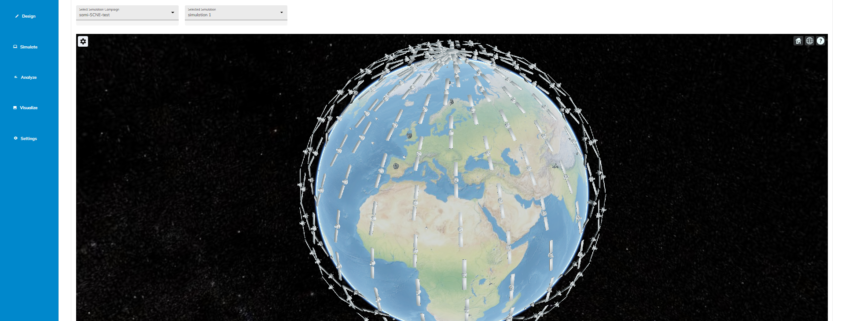Bigger NGSO constellations mean higher throughput and global coverage
Network providers like Starlink have been considering eventually having as many as 42,000 satellites in their Non-Geosynchronous Orbit (NGSO) constellations. Thanks to Magister’s SimLab service and its simulators, the performance and potential of these new mega-constellations can now be studied and assessed.
As of November 2022, there were 3,271 Starlink satellites in orbit, of which 3,236 were operational, according to Astronomer Jonathan McDowell who tracks the constellation on his website. Traditionally, satellite communication has involved geosynchronous orbit (GEO) satellites, but NGSO satellites are now becoming far more common.
NGSO constellations are either Low-Earth-Orbit (LEO) or Medium-Earth-Orbit (MEO) satellites. For global coverage, the more satellites there are the better, but this means somewhat more complex systems to operate and optimize. If current proposals for LEO satellite production become a reality, there could be as many as 50,000 active satellites orbiting the earth within the next ten years.
Optimizing LEO mega-constellations – A system simulator makes it easier to study routings in space
When it comes to LEO satellites in NGSO constellation networks, there are several technological challenges to consider. Being able to manage the cost of the constellation and at the same time assess the service quality is critical for the satellite operator to be able to justify their business case.
“We are looking at the most efficient ways in which LEO mega-constellations could use ISLs for routing in space. It’s clear that ISL-routing algorithms are likely to be the future in satellite constellations.”
– Jani Puttonen, CEO of Magister Solutions
One of the challenges for these LEO mega-constellations with increased global coverage is finding sufficient gateway locations. Either a huge number of gateways are needed all over the world or satellites must have Inter-Satellite Links (ISLs) and routing capabilities. Once linked, satellites form a network in space which means shorter delays and a more consistent global coverage.
At Magister we are always on the lookout for new and better uses of technology to optimize LEO mega-constellations.
“We are looking at the most efficient ways in which LEO mega-constellations could use ISLs for routing in space”, explains Magister’s CEO, Jani Puttonen. “It’s clear that ISL routing algorithms are likely to be the future in satellite constellations. Operators like TeleSat, for instance, are already heading that way”.
How Magister SimLab makes mobile and satellite network simulations far more accessible:
“For our approach, we chose a decoupled architecture that employs AGI’s Systems Tool Kit (STK) and an ns-3 open source network simulator. It means we can access STK capabilities such as orbital propagation, antenna modelling, and link budget calculations at the same time as NS-3’s protocol and network level modelling”.
“STK simulates the satellites’ movements and how they communicate with each other, while our network simulator focuses on communication protocol modelling and routing algorithms”.
How Magister’s SimLab network simulation works:
The time is right for future SatCom systems using NGSO satellite constellations
NGSO satellite constellations are not a new invention: attempts were made to use something similar in the 1990s, but most of them failed due to financial, technical and other difficulties.
Now the idea of using satellite constellations in the development of future SatCom systems has become a reality. This time round it’s more likely to be successful for a number of reasons:
- There’s an ever-increasing demand for bandwidth and low latency communication, including rural and otherwise hard-to-reach areas (such as seas, mountains and deserts).
- Technology involved, for instance, in the mass production of satellites, in frequency resources and usage, in antennas and in launching satellites has become more available and affordable.
- More capital is now available from investors (for example). SatCom is a CAPEX-intensive industry.
- So-called “NewSpace” players have entered the field with fresh, innovative ideas.
- New business cases: e.g., the digital divide, the seamless connectivity of handheld devices, and the Internet of Things.
- 3GPP 5G Non-Terrestrial Network (NTN) standardization as a global connectivity standard – attracting new vendors, increasing competition and lowering production costs.
In many ways, the future is already here, and things are moving quickly.
Interested in investigating GNSO constellations and related technological innovations? Read more about Magister’s SimLab service.



